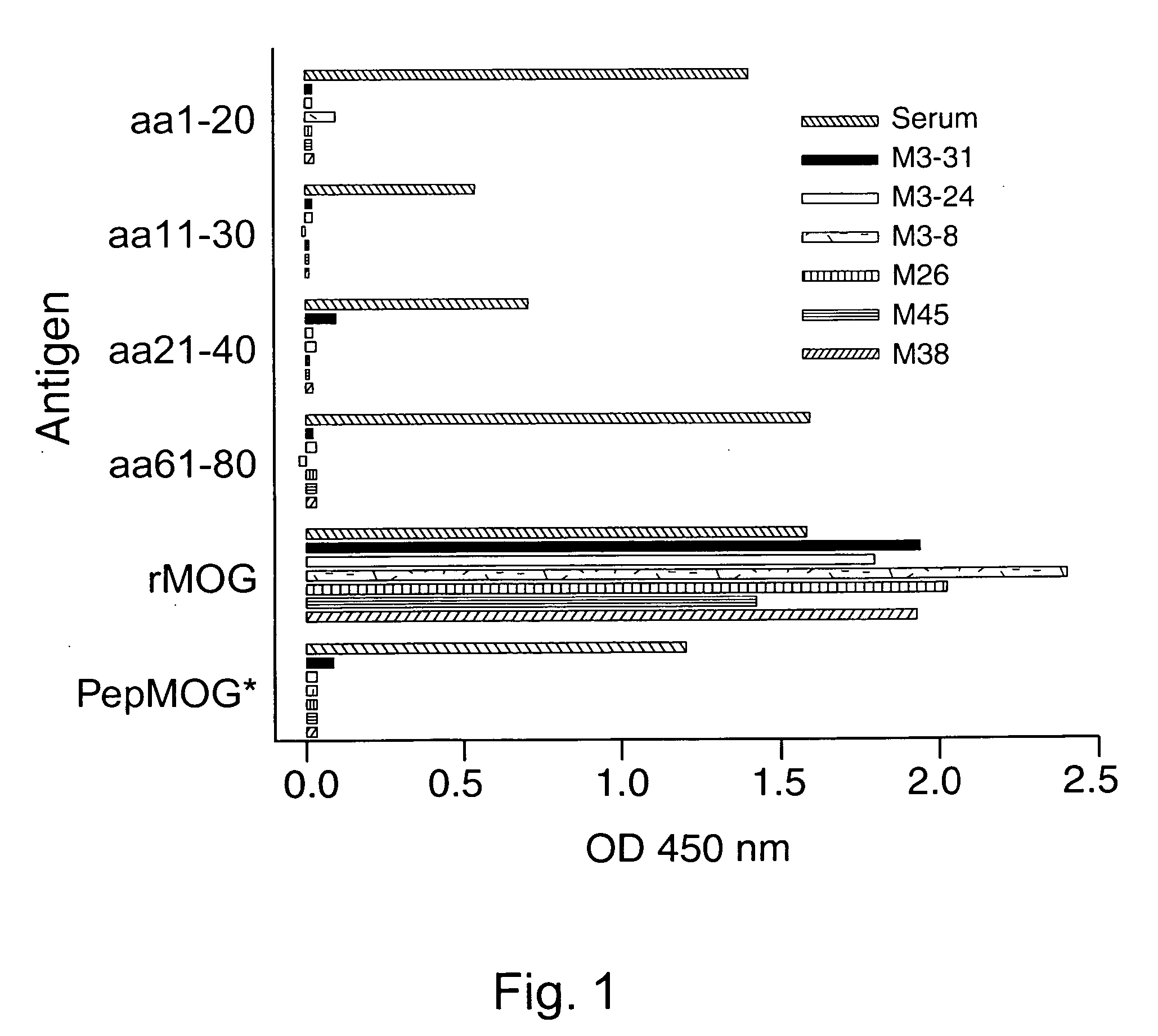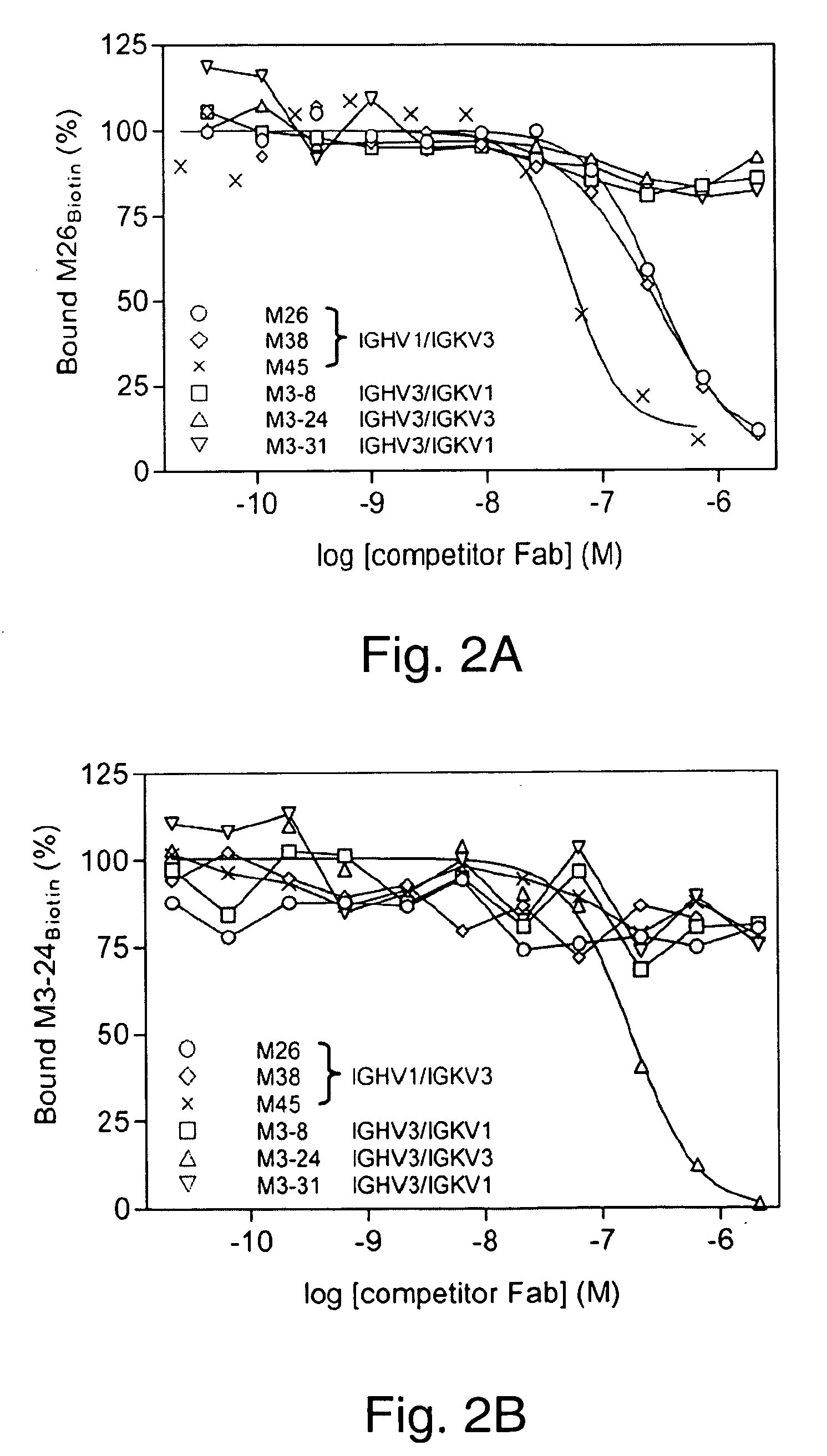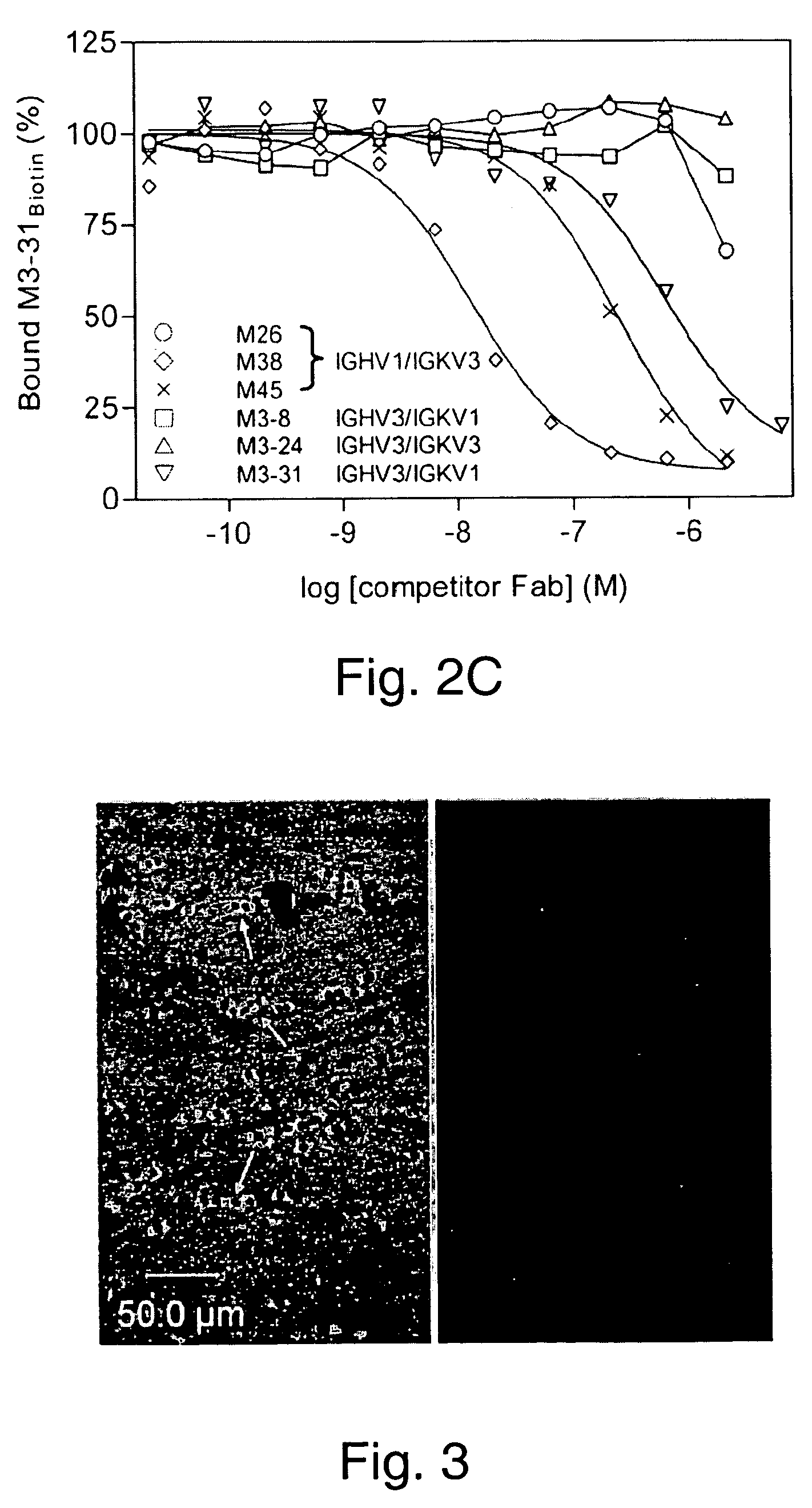Method for diagnosis and prognosis of multiple sclerosis
a multi-sclerosis and diagnosis technology, applied in the field of multiple sclerosis, can solve problems such as defective ms patients, non-paraclinical investigation that accurately predicts clinical course, and prognosis, and achieves the effects of preventing autoantibodies from gaining access to the cns, suppressive t cell responses, and defective regulatory mechanisms
- Summary
- Abstract
- Description
- Claims
- Application Information
AI Technical Summary
Benefits of technology
Problems solved by technology
Method used
Image
Examples
example 1
Molecular Characterization Of Antibody Specificities Against Myelin / Oligodendrocyte Glycoprotein In Autoimmune Demyelination
[0081] Multiple of the central nervous system (CNS) that is thought to be mediated by autoaggressive immune responses against myelin antigens (reviewed in Hohlfeld (1997) Brain 120: 865-916). Extensive investigations have addressed the respective roles of T and B cell responses against myelin antigens in experimental allergic encephalomyelitis (EAE), a disease model for MS. It is now recognized that, whereas myelin-reactive T cell responses are essential to disease pathogenesis, auto-Abs may play a major role as effectors of tissue damage (Hohlfeld (1997) Brain 120: 865-916; Bauer et al.(2001) Glia 36: 235-243; Brosnan and Raine (1996) Brain Pathol. 6: 243-257; Cross et al. (2001) J. Neuroimmunol. 112: 1-14). Myelin / oligodendrocyte glycoprotein (MOG) is a surface-exposed protein of myelin that has been identified as a prime target for demyelinating auto-Abs in...
example 2
The Use of Epitope Specific Antibodies For Diagnosis and Prognosis of Multiple Sclerosis
[0123] Results.
[0124] A) Complexity of Autoantibody Responses Against MOG in Outbred Species
[0125] 1. Repertoire Heterogeneity.
[0126] In marmosets immunized with the extracellular domain of MOG (aa1-125, rMOG), mapping of rMOG-specific antibody specificity in sera and CSF using short peptides revealed 2 immunodominant regions, MOG aa13-21 (100% of animals) and MOGaa63-75 (85%). Additional reactive peptides were identified at residues aa28-35 and aa40-45. Some of the B cell epitopes in marmosets match the location of T cell epitopes (Brok et al. (2000) J. Immunology, 165(2):1093-1101; von Büdingen et al. (2001) J. Clin. Immunol., 21(3):155-170; Mesleh et al. (2002) Neurobiol Dis., 9(2):160-172), as has been shown for MOG in rodents (Ichikawa et al. (1996) J. Immunol., 157:919-926), and for an immunodominant epitope of MBP in humans (Wucherpfennig et al. (1997) J. Clin. Inves., 997: 100(5): 111...
cexample 3
The Ratio Of MOG-Peptide-Specific Over Rmog-Specific Antibodies Is Predictive Of The Severity Of Clinical EAE
[0189]FIG. 18 demonstrates that the ratio of MOG-peptide-specific over rMOG-specific antibodies is predictive of the severity of clinical EAE in the marmoset. Thus it appears to be an extremely useful index for evaluating MS patients.
[0190] As illustrated in FIG. 8, it is not possible to distinguish these different antibody fractions by ELISA or other standard antibody detection methods. The difference in epitope recognition may translate into functional heterogeneity (e.g., pathogenic potential), since marmosets immunized with the linear peptides develop an attenuated EAE phenotype compared to rMOG-immunized animals, despite the apparent induction of similar T cell responses. We have also observed that disease severity in rMOG-induced marmoset EAE is inversely proportional to the ratio of serum concentrations (μg / ml) of MOG peptide / rMOG-reactive IgG.
PUM
| Property | Measurement | Unit |
|---|---|---|
| time | aaaaa | aaaaa |
| OD | aaaaa | aaaaa |
| volume | aaaaa | aaaaa |
Abstract
Description
Claims
Application Information
 Login to View More
Login to View More - R&D
- Intellectual Property
- Life Sciences
- Materials
- Tech Scout
- Unparalleled Data Quality
- Higher Quality Content
- 60% Fewer Hallucinations
Browse by: Latest US Patents, China's latest patents, Technical Efficacy Thesaurus, Application Domain, Technology Topic, Popular Technical Reports.
© 2025 PatSnap. All rights reserved.Legal|Privacy policy|Modern Slavery Act Transparency Statement|Sitemap|About US| Contact US: help@patsnap.com



